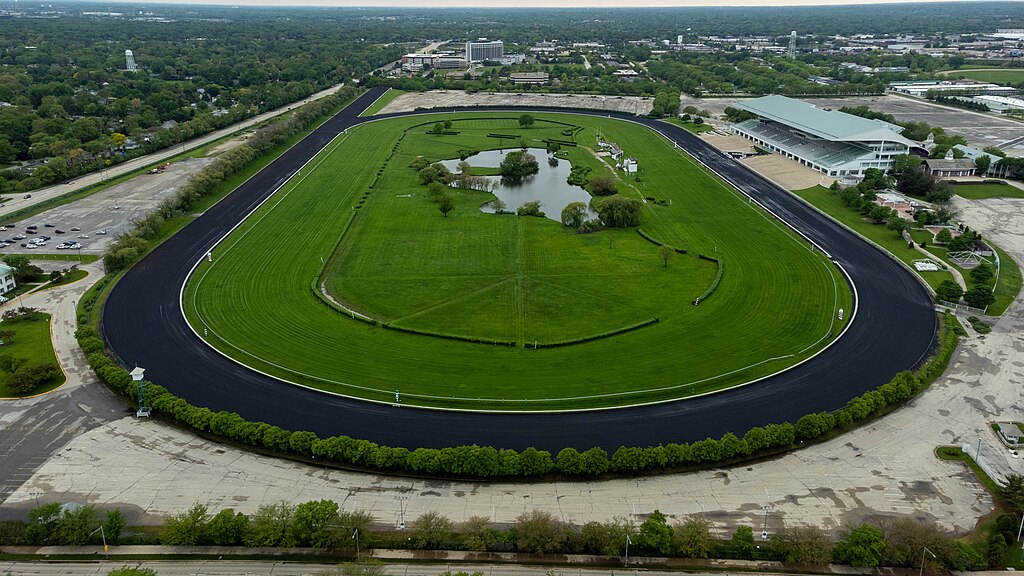
In the movie Jerry Maguire, Cuba Gooding Jr.’s character uttered the iconic catchphrase, “show me the money!” — and that appears to be the approach being taken by the Bears’ consultants in their newly-released economic impact report on the proposed new Bears stadium in Arlington Heights, enticing the community and elected officials with promises of new tax revenue.
But here’s my response, as an actuary:
Show me the math.
Or, more specifically, I call on those elected officials, from Arlington Heights, the local school districts, and the state, to demand more data and evidence, and to release that data and evidence to the public. I’d love to see a development that brings about greater prosperity for the local area and the region, but I want to be persuaded by hard numbers, not pretty pictures or team loyalty. At the very least, the village should be convening experts such as economists, accountants, and, yes, maybe even an actuary, to carefully review the numbers in an independent task force or working group.
The Bears’ consultants’ Economic and Fiscal Impact Report contains only 13 pages, with little detail. Here’s what the report claims:
- 56,000 construction jobs, split between 33,600 for the stadium and 22,900 for the mixed-use district.
- 9,000 new permanent jobs, between stadium, mixed-use district, and visitor spending, with 1,800 of those “supported” by the stadium (including, presumably, both actual employees at the stadium and restaurant/hospitality workers serving spectators before or after the game).
- $38.3M in new state tax revenues, $12.4M new county tax revenue, and $18.4M new local tax revenue per “stabilized year.”
- The city of Chicago will “continue to reap existing and incrementally new tourist benefits from gameday visitors.”
The village of Arlington Heights’ consultant likewise released what was described as an “independent peer review” with two pages of results so substantially similar to the Bears’ report as to call into question the independence of its review.
And there are substantial deficits in all of these claims:
First, the construction job creation counts simply aren’t credible. As a comparison, the new Allegiant Stadium in Las Vegas was promised to generate 18,000 construction jobs. When all was said and done, there were only 2,719 jobs. (See the Nevada Current, as shared on X by @ChicagoBars.)
Second, the 7,200 new jobs (that is, 9,000 – 1,800) associated with the mixed-use area are based on the premise that the site will be so attractive that it will lure businesses from elsewhere, not that there will be new jobs due to innovation. Hence, the report lists jobs in the seemingly-random categories “corporate management, event execution, technology, professional services, business planning, hospitality, and marketing.” In light of the anemic job growth in the state of Illinois in the past 5 years, it is not credible to believe that these would truly be new jobs. If these are companies which relocate, from where would they be moving?
As to the tax revenue, what is fundamentally missing from all of the claims is data on the shift in revenue: how much tax revenue will come to Arlington Heights and the local area? In turn, how much tax revenue will Chicago lose? And are the calculations of new state revenue a fair calculation based on a comparison to the existing revenue, with the existing stadium in Chicago? Without further clarity, the report appears to count all future state tax revenue, that is, as if the alternative is no stadium at all, erasing Soldier Field from existence.
In addition, each new resident and each new business will have costs, not just tax revenue: costs for policing, fire protection, general city services, schools, and state-level costs no different than anyone else. To make a fair decision, we need to know: what will those costs be? The village, in its new FAQ, says that “additional studies are currently underway to assess costs for infrastructure, traffic, and transportation.” But this is an incomplete listing of the costs that new residents and new businesses will bring to a town.
And again — I think that a development that offers the next generation of Arlington Heights residents and businesses great places to live, work, and spend time is highly desirable, all the more so if the greater density makes mass transit more feasible. But the math has to math, and it has to be verifiable by those who will be at risk of paying the bill.
Finally, there’s a larger principle:
What it all comes down to is that the Bears are asking for special treatment and claiming that their status as a very large business should protect them from future risks. The ordinary residents and small and medium sized businesses of Arlington Heights and the school districts will, if the PILOT bill goes through, bear the uncertainty of future risks, none of which are addressed in the reports: how will future economic downturns, possible increases in crime, school spending mandates or increased expectations or needs, demands for increased local spending on social services, etc., impact our tax bills? The more the Bears are protected, the more risk the rest of us face.
If the Bears’ claim is that, absent any special arrangements, the local area will get an undeserved tax windfall, due to the stadium’s unique tax burden, then this specific topic is what should be on the agenda. In fact, as it stands, the largest part of the projection of County and Local tax revenues is due to the amusement tax. It makes far more sense to address with the Bears the question of whether that tax is set at a fair and reasonable level, than to make low-tax guarantees right now.